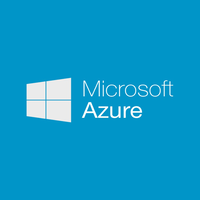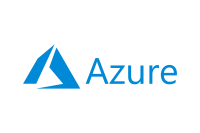Public and private clouds are two different ways to host your applications. You may want to consider the Azure public cloud for its flexibility, speed, and cost. However, it doesn’t offer much control over your data or how it’s stored. Azure private cloud gives you full ownership over your data; however, you sacrifice some of that speed and flexibility in exchange for security and compliance features. This guide compares both options, so you can decide which is right for you.
Also read: Top Cloud Providers & Companies 2022
Table of Contents
Azure Stack

Azure Stack is an Azure extension that offers cloud computing agility and innovation to your on-premises environment by allowing enterprises to bring cloud computing services into their own data centers. Azure Stack, when deployed on-premises, may deliver Azure consistent services whether connected to the internet (and Azure) or in disconnected environments with no internet access.
Benefits of Azure Stack
- Business agility: It helps enterprises keep pace with fast-moving markets, streamlines app development, and allows organizations to achieve new levels of operational efficiency by simplifying access to Azure’s built-in capabilities from anywhere on-premises or in the cloud.
- Cost savings: It helps in reducing operational costs. Using Microsoft Azure Stack, enterprises can implement specific services (e.g., IaaS) based on their business needs resulting in cost savings.
- Multi-cloud integration: It allows rapid migration between environments using existing tools like System Center App Controller, which enables migration of Azure resources like virtual machines, storage accounts, and service bus namespaces between private clouds running on Windows Server and other clouds.
- Compliance & security: It provides enterprise-grade security at all layers of infrastructure by preventing unauthorized access to sensitive data, helping meet strict compliance requirements.
- Acceleration services: It offers accelerated time-to-value by moving applications faster through automated, simplified management.
Key Differentiators
Autonomous cloud
With Azure Stack, you have everything under your control, so you know exactly what’s happening with your data, including where it is stored and where it is moving. You can even run hybrid scenarios to ensure business continuity.
Edge and disconnected solutions
By processing data locally in Azure Stack and then aggregating it on Azure for further analytics, with the same app logic across both, you may reduce latency and connectivity requirements. With disconnected internet connectivity, you can deploy Azure Stack without connecting to Azure.
Cloud apps that meet varied regulations
With Azure Stack, you can build and deploy applications in the cloud, and you can also deploy them on-premises to meet regulatory or policy needs.
Cloud app model on-premises
Update and extend existing applications or create new ones using Azure services, containers, serverless, and microservice architectures. Accelerate the modernization of mission-critical core applications by using consistent DevOps methods across Azure in the cloud and Azure Stack on-premises architectures and tools.
Ability to use consistent tools, experiences and app models
A consistent management experience across Azure Stack allows you to use an application or tool that supports an RBAC (role-based access control) model. Experience familiarity when managing your hybrid environment, while still enjoying the security and scale benefits of on-premises infrastructure.
Pricing
Azure Stack offers pay-as-you-use pricing. The prices below are estimates only and are not intended as actual price quotes. Actual pricing may vary depending on your requirements. You can use the Azure Stack calculator to get an estimate.
| Azure Service | Price |
| Virtual Machines Base Virtual Machines Windows Server Virtual Machine | $6 vCPU/month $34 vCPU/month |
| Storage Accounts Blob Storage Table and Queue storage Standard Unmanaged Disks | $0.006/GB/month $0.018/GB/month $0.011/GB/month |
| Managed Disks M4 (32 GB) M6 (64 GB) M10 (128 GB) M15 (256 GB) M20 (512 GB) M30 (1 TB) | $0.385/disk/month $0.753/disk/month $1.473/disk/month $2.833/disk/month $5.44/disk/month $10.24/disk/month |
| App Service Web Apps, API Apps, Functions | $42 vCPU/month |
| Event Hubs | $0.2688/core/hour |
Also read: Private Cloud vs Public Cloud
Azure Cloud

Microsoft Azure is a cloud computing platform and infrastructure created by Microsoft for building, deploying, and managing applications and services through a global network of Microsoft-managed datacenters. It provides both PaaS (platform as a service) and IaaS (infrastructure as a service) via its offerings. With respect to IaaS, Azure offers virtual machines, storage, networks, analytics, application services, security software, API access, etc. PaaS comprises .NET cloud services, integration services, App Services, etc. in which developers can build and run web apps on Microsoft-managed servers.
Benefits of Azure Cloud
- Comprehensive functionality on demand: Microsoft Azure is a comprehensive multi-platform enterprise cloud with offerings including IaaS, PaaS, and software as a service (SaaS).
- Scale on demand: Customer workloads can be scaled up or down in seconds with no downtime or performance degradation.
- Completely integrated cloud platform: Microsoft engineers services built on top of Azure, so developers do not have to spend time building common components like database storage, virtual machines, and load balancing solutions.
- Hybrid computing scenarios become easier: Developers can easily provision a single application across multiple locations without having to worry about maintaining data consistency between them.
- Rapid scaling: The system automatically scales out to provide additional resources as customer demand grows (and back down again as usage dips).
Key Differentiators
Data resiliency
Azure is built with resiliency in mind, you can replicate your data to geographically distinct data centers and even create data center-to-data center replication. In addition, if one region is inaccessible because of a natural disaster or some other incident, Azure will automatically redirect requests to another region. It also provides secure backup for user content, including applications and application settings, via consistent snapshots. If anything does happen to go wrong, multi-tenancy in Windows Azure lets you work directly with other users’ data without compromising security or confidentiality through encryption techniques at rest and in motion.
Data security
To ensure that you are keeping your clients’ data secure, Microsoft has made it easy to manage who can access what. They have implemented two ways of managing permissions: RBAC and feature-based access control (FBAC). RBAC enables you to create roles, granting certain permissions, while FBAC allows you to restrict or give access to specific features in a cloud service. In addition, they offer encryption at rest and in transit, which provides protection for clients’ sensitive information. You can also take advantage of data loss prevention for these same needs by preventing or restricting external entities from copying, sharing, printing, downloading, editing files without approval from designated business users only.
BCDR integration
Business Continuity/Disaster Recovery (BCDR) Integration enables Azure Storage replication to on-premises storage. Azure Site Recovery has been designed to work with Azure Backup, Azure site recovery helps you replicate server workloads from on-premises virtual machines to Azure. Data replication is done in real-time, helping ensure the data protection of your replicated servers at all times.
Capacity management
With a wide range of instance types, you can find an Azure virtual machine with the right balance of resources for your workload. By using autoscaling, you’ll only pay for what you use, so if traffic to your website spikes and your VM needs more power, it’s ready when you need it. There’s no need to worry about where to host or how many instances are enough.
Single-pane operations
Microsoft Operation Management Suite enables you to use a single pane of glass to monitor, manage, and operate your cloud-based applications. Rather than managing each application individually, you can effectively handle an entire array of systems all at once through comprehensive views and reports, centralized management capabilities, and prebuilt automation services.
Pricing
Azure Cloud has a pay-as-you-go pricing model. The costs shown below are simply estimates and are not intended to be exact pricing quotes. Actual cost may vary based on your needs. To get an actual estimate, use the Azure Cloud total cost of ownership calculator.
| Azure Service | Starting Prices |
| Linux virtual machines | From $0.004 per hour |
| Functions | From $0.20 per million executions |
| Block Blob storage (ZRS HOT) | From $0.023 per GB per month |
| Block Blob storage (ZRS COOL) | From $0.013 per GB per month |
Azure support plans
| User category | Developer | Standard | Professional Direct | Premier |
| Best for | Developer trial and non-production environments | Production workload environments | Business-critical dependence | Substantial dependence across multiple products |
| Initial response time | Less than eight hours | Less than two hours | Less than one hour | Less than 15 minutes with Azure Rapid Response or Azure Event Management (with Azure Rapid Response), less than one hour without Azure Rapid Response |
| Monthly cost | $29 | $100 | $1,000 | No pricing is available, you can contact the sales team for quotes. |
Azure Stack vs. Azure Cloud
Here is how Azure Stack and Azure Cloud’s feature sets compare:
| Feature | Azure Cloud | Azure Stack |
| Portal | ✔ | ✔ |
| PowerShell | ✔ | ✔ |
| DevOps Tools | ✔ | ✔ |
| Azure Resource Manager | ✔ | ✔ |
| IaaS and PaaS | ✔ | ✔ |
| Deployment | Cloud | On-premise |
| Hosting | Public | Private |
| Azure Resource Manager Endpoint Portal URL | https://portal.azure.com | https://management.local.azurestack.external |
Choosing Between Azure Cloud and Azure Stack
If you’re an enterprise-level user or an IT manager, one of your main concerns will likely be cost savings while maximizing uptime. Both services have their place in a business, both off-premises with Azure Cloud and on-premises with Azure Stack. It all depends entirely on your requirements from your IT infrastructure.
If it’s great flexibility and high performance, then Azure Cloud will probably be your go-to platform. If it’s tight security and control—plus reliable uptime—then hosting cloud applications on Azure Stack could be better for you.
Whatever option you choose should be appropriate for what an organization needs. Ultimately, it’s all about striking a balance between cost and capability—ensuring you get something flexible enough to meet changing demands over time, while still meeting current business needs too. Hybrid clouds are also recommended since it allows enterprises to get the best of both worlds.
Read next: Creating a Cloud Migration Checklist


